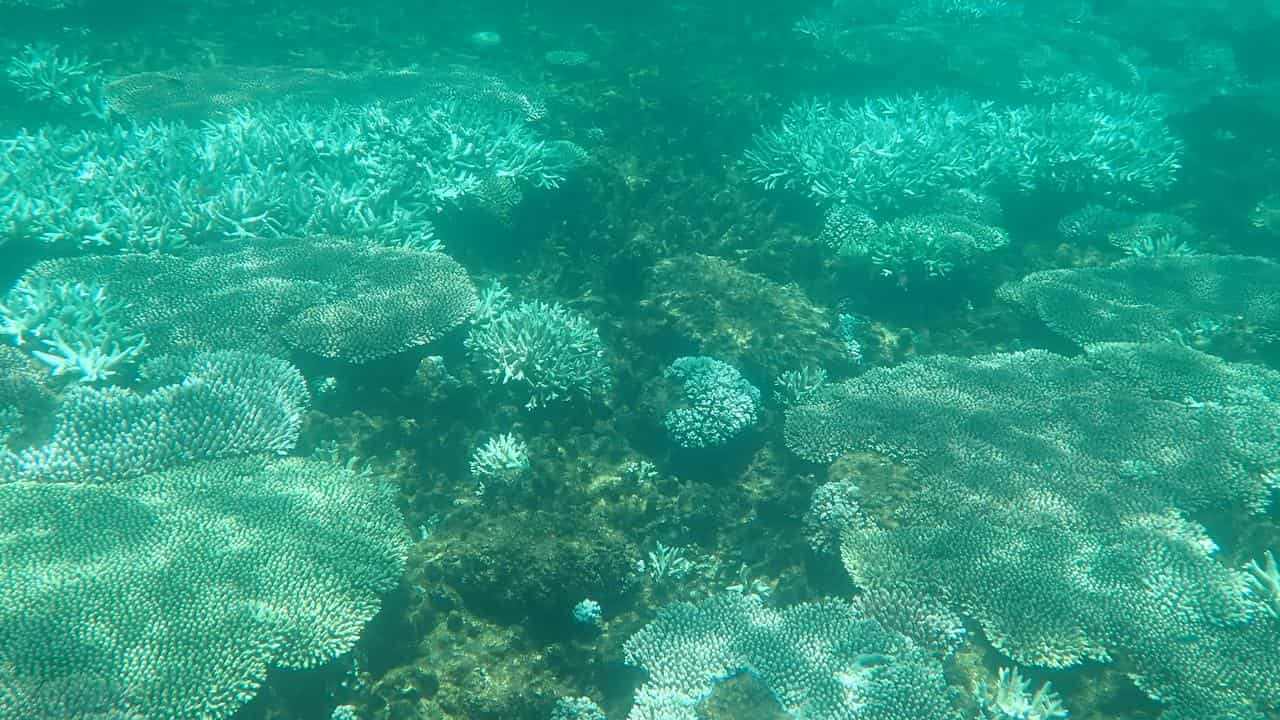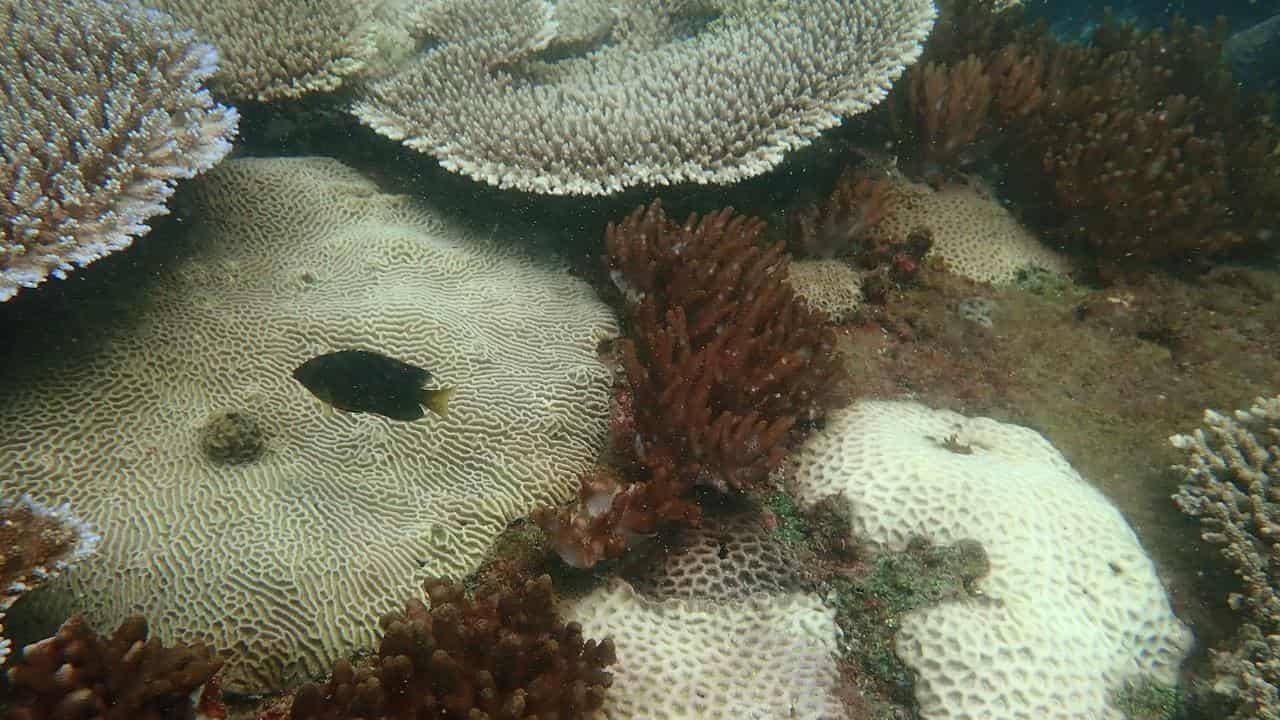
Scientists have gathered more evidence of extensive coral bleaching on the Great Barrier Reef, with southern sites hit hard.
Helicopter flights over almost 50 inshore and offshore reefs last weekend show this summer has been costly for the World Heritage-listed ecosystem.
The flights, over the reef's southern region, have provided a good overview.
But experts say the scale of the damage won't be known until they get in the water in coming weeks.
The aerial surveys showed coral bleaching was extensive and fairly uniform across 27 inshore reefs in the Keppel Islands and Gladstone region and 21 offshore reefs in the Capricorn Bunkers.
"Most coral cover displayed some level of bleaching with white and fluorescent colonies observed in shallow reef areas," says Mark Read, the authority's reef health director.
Neal Cantin, from the Australian Institute of Marine Science, says spotters also saw bleached corals at depth.

"Limited bleaching was observed on some reefs north of Mackay and into the Whitsunday Islands during additional surveys," he says.
“Aerial surveys are an ideal tool to assess the spatial extent of bleaching, but we need to go under the water to understand more about the severity of bleaching and how deep the bleaching extends."
While southern reef appears to be most affected, the Great Barrier Reef Marine Park Authority has had reports of bleaching from all other regions.
Bleaching is caused by heat stress and it can kill corals.
And while bleached corals often recover, heat stress leaves them more susceptible to diseases that can kill them. Reproduction is also affected.
James Cook University scientists last week reported severe coral bleaching and coral deaths around the Keppel Islands, with water temperatures well above the summer average.
The marine park authority says more flights will be done over the southern reefs this weekend and in-water surveys will be carried out across the reef over the next three to four weeks.
“We are also preparing for broadscale surveys by fixed wing aircraft which will cover the central and northern regions, should conditions indicate these are required," Dr Read says.
Climate change is the biggest threat to the reef and it's also suffering the effects of poor water quality.
Australia has spent years trying to prevent the reef from being listed as a World Heritage site in danger, but conservationists say prospect of an in-danger listing will be on the cards as long as climate change is a threat.
Earlier this month, Australia sent a progress report on its reef protection efforts to UNESCO's World Heritage Centre and the International Union for Conservation of Nature.
They will assess those efforts and make recommendations to the World Heritage Committee when it revisits the in-danger listing at a meeting in July.




